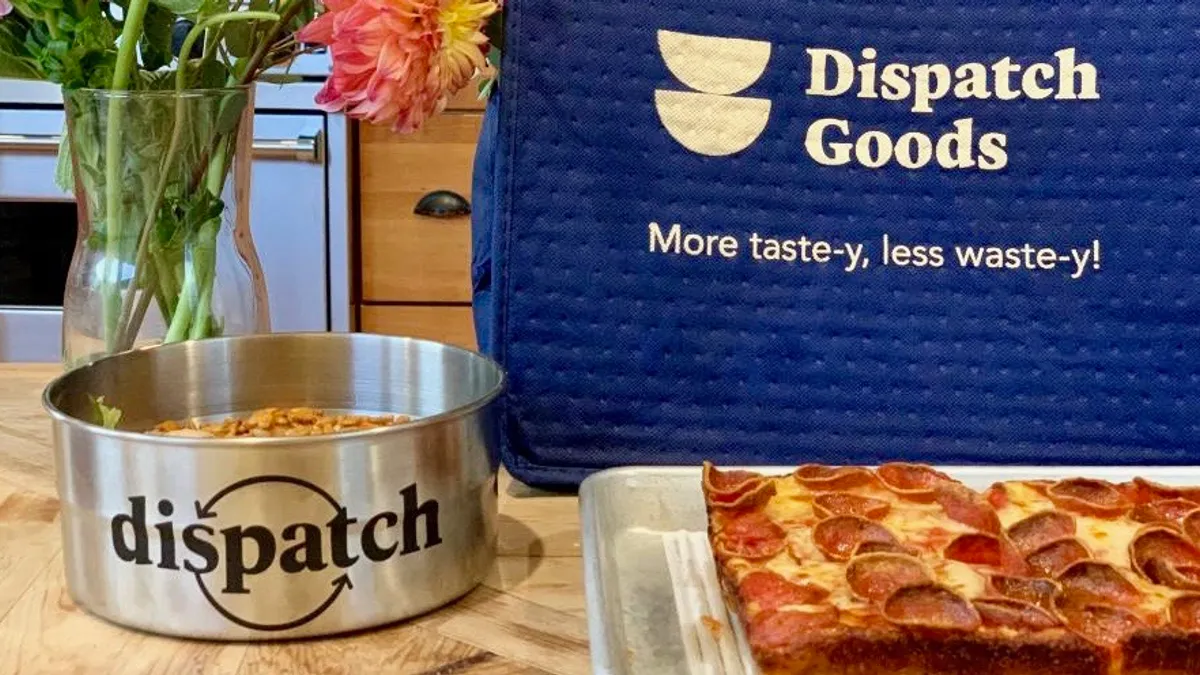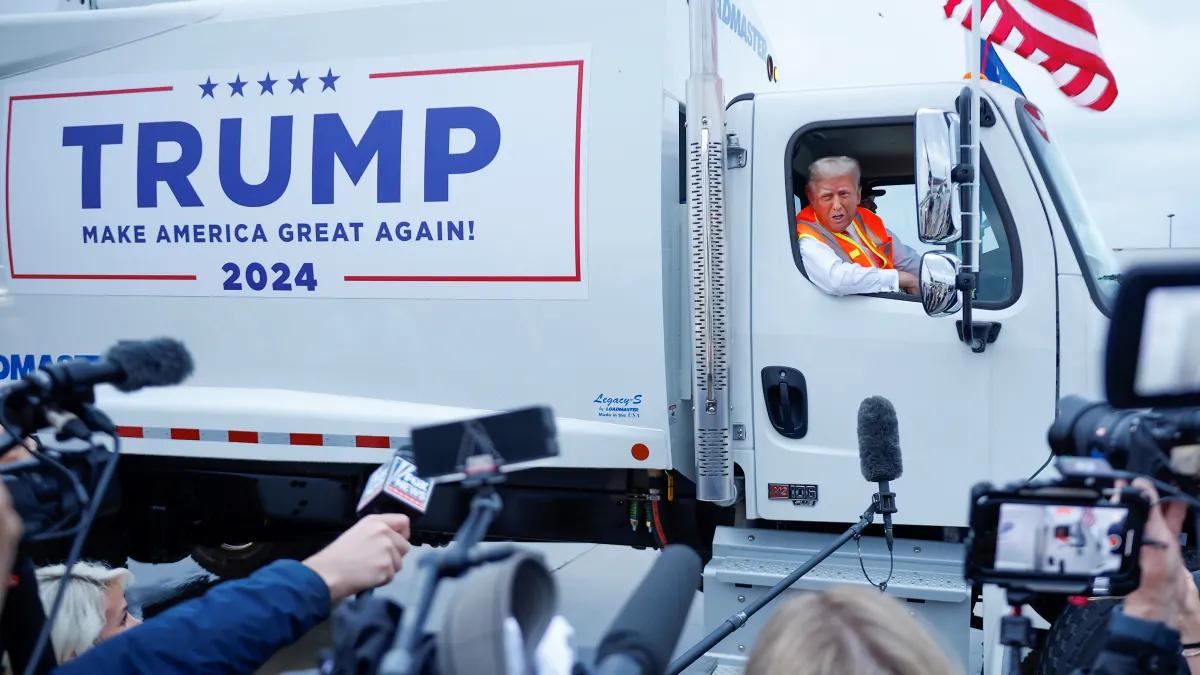As reusable packaging systems slowly gain market share from more traditional disposable options, key questions remain on how communities can best integrate reuse systems, what role traditional waste haulers play in the evolution, and how vendors and logistics managers can make these innovations more sustainable and scalable in the long term.
Those questions were part of broader reuse discussions at this year’s National Zero Waste Conference, held virtually Dec. 8-9 by organizers Zero Waste USA and the National Recycling Coalition.
Here are a few takeaways from the experts at this year’s virtual gathering:
Despite early worries, reuse programs showed resilience throughout the pandemic
In the first months of the pandemic, many communities or stores disallowed reusable bags and offered more single-use plastic bags and utensils as a precaution against spread of the coronavirus. That put some reusable packaging companies on the defense, said Scott Morrison, a reusability consultant and the Canadian manager of Muuse. The company provides reusable cups that can be returned to multiple drop-off points throughout Toronto and other major cities.
Morrison is also co-founder of reusables rental service Dream Zero, which provides the cups for large events. The company had planned to offer 750,000 individual cups in 2020, but as more and more public gatherings were canceled, they ended up needing only about 100. Muuse and other reusable packaging companies, even ones with very reliable customers, also fielded concerns about how well reusable containers were sanitized.
“We really had to get into the nitty gritty of all the points of contact,” said Morrison, such as how many workers come in contact with a reusable item, how well it’s washed and how it’s stored for the next user.
As scientists learned more about COVID-19 transmission and restrictions on reusable items eased, interest in reusables has returned. Now, more pilots from different types of reusable packaging companies are in the works in other cities
“The transformation of the food service industry from disposable to reusable packaging has been happening for a long time, and COVID has shown the resiliency of reuse systems and we are much much better for it,” he said.
More recently, ongoing global supply chain issues have served to strengthen the case for reuse systems, Morrison added. Waiting for an order of reusable containers from overseas will still be subject to the same shipping delays as any other product, but once the containers are being circulated by the local restaurants and shops, those items are used multiple times and become part of a local supply chain.
“There's a lot less interruptions in a local supply chain, and it’s very efficient,” he said.
Reuse ventures are gaining investment and scale
Among the reuse companies sharing the spotlight was San Francisco-based reusable packaging logistics startup Dispatch Goods, which counts DoorDash as a customer. It’s fresh off a $3.7 million seed raise that leaders say will in part support geographic expansion and help grow the number of restaurant partnerships.
While portions of the conference centered on discussion of a post-capitalist world, Dispatch Goods founder and CEO Lindsey Hoell noted that there’s a worthwhile economic case to be made for some, though not all, reusable versions of products.
“It's really shocking to understand how much businesses are spending on packaging,” she said.
Since the startup’s formation in 2019, the team has realized that both from a logistics and efficiency standpoint, as well as for equity reasons, “reusables need to be the default option,” Hoell said. “It can't be something that people need to pay a membership [or upcharge] for” as systems like Dispatch Goods’ have historically begun.
Currently in San Francisco, about 70% of Dispatch’s volume comes from restaurants that have made “the complete shift over to reusable packaging,” Hoell said, “and that is a very strong indicator.” She believes those participating restaurants feel it’s a better experience for customers, and that customers are demanding the shift.
But ultimately, Hoell does not see wide-scale adoption or transition to a reuse economy as a likely reality until brands are held accountable for negative externalities through extended producer responsibility policies. Dispatch’s steel containers cost about 20 cents more per use than compostable alternatives, and cost about twice as much as plastic alternatives.
“When we talk to fast-casual restaurants that are running on razor thin margins, the conversation doesn't get very far,” she said. “We're talking to major chains that are keeping their eye on extended producer responsibility laws that are being introduced, and say that they will make the shift when that happens. That's when the economic case for reuse will be stronger than for single use.”
Local, state and federal policy support will boost reusable packaging longevity
Policy changes at all levels that center on reusables could go a long way to making reusable packaging a more permanent part of the ecosystem, speakers said.
Dagny Tucker is founder of reusable, trackable cup company Vessel, based in Boulder, Colorado. Tucker said places like Berkeley, California, are good examples of where government and business leaders are working together on the same reuse goal.
In 2019, the city enacted an ordinance meant to reduce single-use foodware like cups, utensils and clamshells. It also imposed a 25-cent fee on single-use cups, prompting a local nonprofit and the University of California at Berkeley to partner with Vessel on a pilot program to offer its reusable cups at local coffee shops and eateries.
“It was pretty extraordinary legislation, and that had a huge impact in the [reuse] space and for us as a business at that time,” she said.
Although many cities don’t have integrated reusable foodware programs, speakers see local single-use plastic reduction ordinances as a key step toward making space for reusable alternatives. Yet some cities are still mulling how to reduce waste while also easing the impact on local businesses.
Washington, D.C.’s zero waste law, for example, includes provisions requiring disposable foodware be provided only on request, but the law encourages but doesn’t require restaurants and bars to provide reusable alternatives. Council members saw the new rule as a compromise between reducing single-use plastics and recognizing how COVID-19 impacted eateries’ business.
Activists are also calling for more funding and resources for reusables at the national level, which the Biden administration and U.S. EPA indicated they will prioritize in future initiatives. The U.S. EPA’s recently released National Recycling Strategy promised the agency would issue a report in the future on reuse strategies, and the current version of the Democrats’ draft budget reconciliation bill includes grant funding to reduce waste in manufacturing or encourage manufacturers to design packaging that reduces waste. Meanwhile, the infrastructure bill Biden signed in November provides about $350 million for recycling efforts.
However, activists have previously called directly for funding for reusable foodware systems, and urged the Biden administration to exercise "federal purchasing power" by shifting toward reusable items.
Newly enacted state laws could also help spur future action, speakers said. This year, California voted to expand its bottle bill to allow refillable beverage containers to be returned and washed for reuse instead of being crushed, which some supporters say is a critical first step for creating returnable beverage bottle systems in the state.
Reusable products need strong logistics and infrastructure, too
For future ordinances or legislation around reusable items, Vessel’s Tucker urged local, state and federal government officials to look at reusability programs as critical infrastructure instead of an opportunity for a limited-time pilot.
“We have to answer questions like, ‘Are we going to standardize reuse? Can there be multi-vendor return stations where [reuse companies] have a return and shared infrastructure on the back end really make scaling and efficiency work? Government has a huge role to play in this.”
Good reuse programs also require creating and sustaining the logistics necessary to keep the program running long-term, Tucker said.
“People sometimes say to me, ‘oh, you run a reusable cup program. That sounds cool and easy.’ But it's a reverse logistics [effort]. There are so many complexities to it.”
Getting users to return items is one obvious hurdle, speakers said. Many reusable foodware companies advocate for implementing collection points at multiple types of community spots, such as grocery stores, restaurants and even parks. In cities with multiple reuse services, many advocates envision shared drop-off points that will accept multiple companies’ packaging.
Further innovation could also help make reuse companies more efficient by partnering with new businesses that specialize in asset tracking, washing or other logistics.
The San Francisco Bay Area already has several startups dedicated to providing washing services for reusable foodware companies, and Tucker hopes this service can be widely available in other areas, too. Some companies, like Muuse and Vessel, already use asset tracking tech such as radio-frequency identification or scannable QR codes, but Tucker said startups are now offering innovative tech support that could streamline packaging management even further.
In the future, advocates like Crystal Dreisbach, founder and executive director of Don’t Waste Durham, think reusable packaging could find a place in the traditional curbside recycling model. The nonprofit supports multiple zero-waste and waste reduction efforts in Durham, North Carolina, including Green2Go, which offers reusable, returnable to-go boxes. She envisions a future where residents can leave both reusable items and recyclable items at the curb at the same time. Durham is in the process of testing this idea through a pilot program with Sonoco Recycling. During the first pilot in 2019, reusable containers were RFID tagged, commingled with regular recyclables, and monitored while they made their way through a MRF. The experiment was able to recover 97% of the reusable containers, she said.
“We can help the recycling industry adapt and evolve beyond recycling, but also to become a redistribution center of the reusable packaging,” she said. Another pilot will launch in Durham next year to learn more about financial feasibility and other details, she said.
Though government buy-in can be an important tool, reusable foodware programs shouldn’t wait for local laws in order to innovate at the local level, said, a nonprofit that supports
“For the past eight years, we've been working on policy and lots of innovations that people and businesses can use right now, while we wait for government to catch up and do the right thing,” she said.
As for how the growth of such systems will impact traditional waste haulers, Hoell of Dispatch Goods suggested it’s a symbiotic relationship.
“I think that the conversations we've had with both Recology and Waste Management are overwhelmingly supportive of getting some help offloading some of the waste that they're collecting,” she said. “So I will say that our experience has been one of complete collaboration and based on the fact that they're drowning and really [need the help of new systems.]”
























